Brazilian name: araponga-do-horto
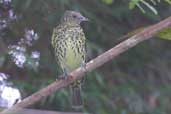
The Sharpbill is found in a series of disjunct areas from Costa Rica to south-east Brazil and including the tepuis of southern Venezuela and the Guianas, Amapá, eastern Pará, and various spots on the eastern slopes of the Andes.
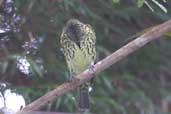
Amongst its many distinguishing features are its sharply pointed bill, the orange-reddish iris, the scaling on the head and neck and the black spots on the underparts. It has a red or yellow crest which is normally flattened and hidden as in the second photo.
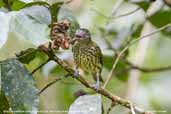
It used to be placed in a family of its own but recent DNA evidence suggests that it is a member of the cotinga family.
There are illustrations in Ridgely & Tudor, Volume 2, Plate 48; and Sick, Plate 33.
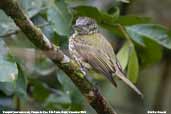
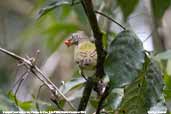
| Previous Page | Back to Index | Next Page |